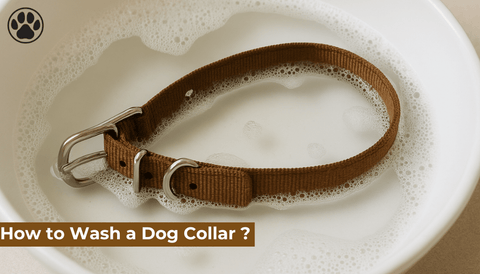
How to Train a Dog with a Shock Collar ?
of reading - words
Training a dog can be challenging, especially when dealing with persistent behavioral issues. One method that often sparks debate is the use of a shock collar, also known as an electronic collar or e-collar. When used correctly and responsibly, a shock collar can be an effective tool for reinforcing commands and addressing problem behaviors. This article explains how to train a dog with a shock collar in a safe, humane, and effective manner.
Understanding What a Shock Collar Is
A shock collar is a training device that delivers a mild electrical stimulation to your dog through a receiver attached to its collar. The purpose is not to harm but to get the dog’s attention and reinforce training cues. Modern shock collars often include multiple settings, such as vibration and sound, allowing for a more controlled training approach.
The Importance of Responsible Use
Before you start, it’s essential to understand that shock collar training should never be used as a form of punishment. Instead, it should be part of a broader positive reinforcement program. Misuse can lead to stress, fear, and even aggressive behavior in dogs. The goal is to communicate, not to scare.
Step 1: Choose the Right Shock Collar
Not all shock collars are created equal. Look for models that offer:
-
Adjustable intensity levels
-
Vibration and sound options
-
Reliable range for your training environment
-
Waterproof and durable materials
Select a collar that suits your dog’s size, breed, and temperament. A small dog will require a much lower setting than a large, stubborn breed.
Step 2: Introduce the Collar Gradually
Before activating the device, allow your dog to wear the collar for a few days without using the shock function. This helps the dog associate the collar with normal activities rather than punishment. Keep training sessions short, positive, and rewarding.
Step 3: Start with the Lowest Setting
When you first begin, set the collar to its lowest stimulation level. The goal is to find the minimum effective setting that gets your dog’s attention without causing distress. Some dogs respond well to vibration alone, eliminating the need for electrical stimulation.
Step 4: Pair the Collar with Commands
A shock collar should not replace basic obedience training—it should enhance it. Always pair the stimulation with a known command, such as “sit” or “come.” Give the command first, and if the dog does not respond, apply the mild stimulation followed by praise when the dog complies. This reinforces the behavior you want.
Step 5: Focus on Timing and Consistency
In shock collar training, timing is critical. The stimulation must occur immediately after the unwanted behavior or lack of response, so the dog can make the connection. Consistency ensures your dog understands what is expected. If multiple family members are involved, make sure everyone uses the same commands and techniques.
Step 6: Use Positive Reinforcement
Combine shock collar cues with rewards such as treats, praise, or playtime. Dogs learn faster when good behavior is acknowledged and rewarded. The collar should serve as a reminder, not the primary motivator.
Step 7: Gradually Reduce Collar Use
Once your dog reliably responds to commands, start reducing the use of the collar. The long-term goal is for your dog to obey without stimulation. Over time, the collar should become unnecessary.
Common Mistakes to Avoid
-
Using the collar without prior training
-
Setting the stimulation too high
-
Using it as punishment
-
Training for too long in one session
-
Neglecting to reward good behavior
Avoiding these mistakes helps ensure a positive training experience for both you and your dog.
Safety Considerations
Always follow the manufacturer’s instructions. Do not leave the collar on for extended periods to prevent skin irritation. Check your dog’s neck regularly and adjust the fit to avoid discomfort.
Is a Shock Collar Right for Your Dog?
While some owners find shock collar training highly effective, it’s not suitable for every dog. Nervous, fearful, or very young dogs may react poorly. Consulting a professional dog trainer before starting is highly recommended.
FAQ
Q: Will a shock collar hurt my dog?
A: When used correctly on the lowest effective setting, a shock collar delivers a mild stimulation similar to a static shock—not enough to cause pain.
Q: Can I use a shock collar on a puppy?
A: Shock collars are generally not recommended for puppies under six months old. Focus on basic obedience first.
Q: How long should training sessions last?
A: Keep sessions short—around 10 to 15 minutes—to prevent stress and maintain your dog’s focus.
Q: Can I use vibration mode instead of shock?
A: Yes, many dogs respond well to vibration or sound cues, which can be an effective and humane alternative.
Q: How soon will I see results?
A: Results vary, but with consistent training, many owners notice improvement within a few weeks.




